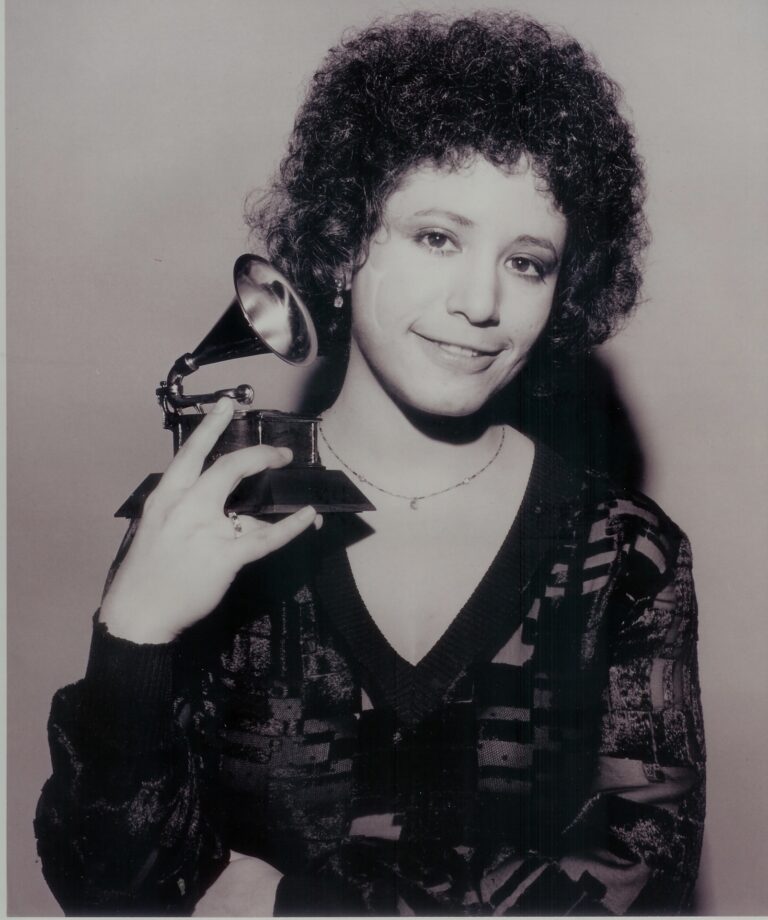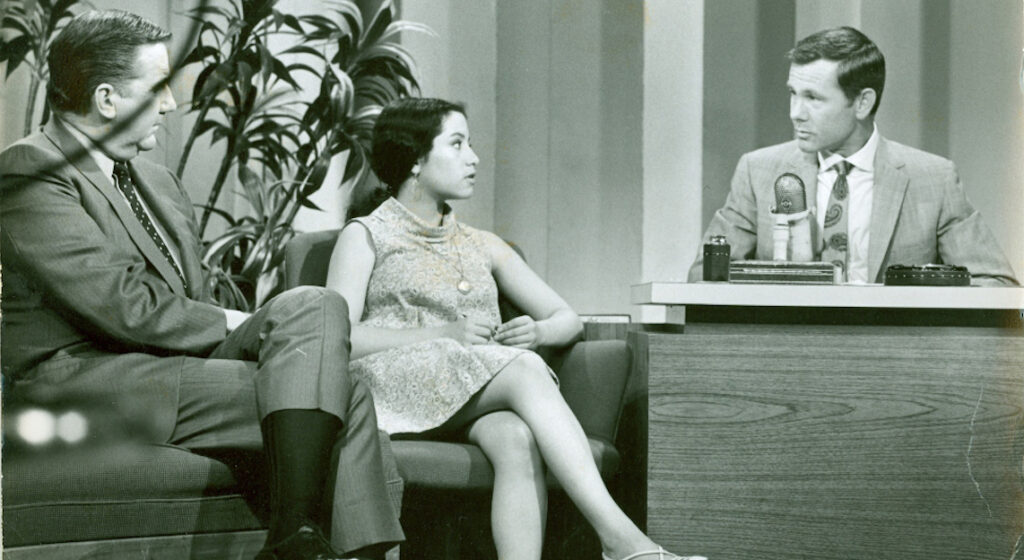BEREA, Ky. — On one of their visits, Janis Ian took Berea College President Lyle Roelofs to her studio. There he saw a photo of “a very young” Ian sitting at a grand piano. “Looking over her shoulder at the music she had written and was playing from,” he realized, was Leonard Bernstein, the legendary songwriter and longtime conductor of the New York Philharmonic.
Roelofs was visiting Ian to assure her that Berea would be a good home for her archives, which chronicle more than five decades of her work and life as a singer, songwriter, activist and winner of two Grammy Awards.
The material in the collection, Roelofs said, “will just totally blow you away.”
For Ian, it’s a “win-win” because her vast personal collection has found a place where it will be not only safe and cared for but appreciated and used.

As she and her wife, Pat Snyder, started looking for a home for the collection, Ian said they spoke with many major institutions and some “fairly substantial amounts of money” were thrown around.
But many had so much in their collections that Ian’s things would spend most of their time in storage. For example, the Smithsonian Institution said it would be at least a decade before any of Ian’s material could be exhibited. Ian appreciated the frankness but also “realized that all of the major institutions would face the same problem.”
And then there was also the quirkiness of the collection, she said. “Who wants the archives of a songwriter, it’s not like that’s an important thing, right?”
Ian’s friendships and correspondence embrace a wide range of people — Dolly Parton, Stella Adler, Willie Nelson, Mel Torme, Chick Corea, Lily Tomlin. There’s a book of poetry, her mother’s plays, a Grammy not only for best female pop performance (“At Seventeen” in 1975) but for best spoken word (“Society’s Child: My Autobiography” in 2012), there’s her father’s — later her — guitar and the sheets where she composed her songs.
“Most archivists have been trained to deal in paper” Ian said, “and if it’s a Hollywood star like Katherine Hepburn, costumes, but not an artist like me.”
Ian grew up in New Jersey, a long way from the Kentucky knobs where an abolitionist minister founded Berea College in 1855. Her career took her to Los Angeles and around the world as a performer before she settled in Nashville.
Berea never hit her radar until she and Snyder created the Pearl Foundation around 2000 to honor Ian’s mother, who had always dreamed of going to college but wasn’t able to until her successful daughter sent her. Through the foundation they wanted to help other people realize their dream of an education.
She said her friend, songwriter Billy Edd Wheeler, told her “’look, if you’re going to be giving money away in scholarships you ought to be giving it to Berea,”’ where he had graduated in 1955. Plus, Snyder had a former student who had gone there and was “just raving about how great it was.”
“We visited Berea once and we were as impressed as we expected to be,” she said, so they established an endowment to provide scholarships there but left it to the school to administer, remaining very hands-off.

Years later as they worked their way through the major institutions looking for a home for her archives they found, “there was always some reason that it wasn’t right.” And then they began to consider Berea again.
For a small school Berea has a pretty significant archive that now includes the collections of author and activist bell hooks and Appalachian folk singer Jean Ritchie, “who I admire greatly,” Ian said.
Plus, there was Berea’s mission. It was the first integrated, co-educational college in the South and hasn’t charged tuition since 1892. “I really like the dichotomy,” Ian said. “Berea is not a Jewish school, not a particularly gay school, not a lot of the things that I am … and yet, it is.”
Like many Berea students, Ian said, “I started out on a farm. My earliest memories are of singing to the chickens from the back of a flatbed truck.” And her family worked hard to create a place for themselves in this world, like those of many Berea students. “My grandparents were immigrants, I always felt out of place, I’m self-educated, my dad was the first person in either family to graduate from college.” So, for all the differences, “there’s a lot of commonality.”
And then there was the fact that Berea invests in its students. Ian said Snyder summed it up: “All of these schools have $15 million stadiums and then there’s the school that has the $15 million students, which do you want to be aligned with?” In the end, “it was pretty much a no-brainer.”
Ian had lunch with Teresa Kash Davis, a Berea grad herself who is now the school’s vice president for alumni and philanthropy. After lunch, Ian recalled, she said, “so, why don’t I just leave Berea my archives, let’s just do that.” Davis “just kind of looked at me with her mouth hanging open and said ‘well, we can’t pay you.’” And that was fine.
Roelofs and others made trips to Florida — where Ian and Snyder now live — to assure them the collection would get the attention it deserves. Over the course of 18 months they worked out details about how the material would be transferred, Berea’s financial commitment to the care and display of the collection and other arrangements, including Ian’s commitment to helping raise money to support Berea’s work with the collection. “Janis is a very thoughtful person who makes sure she gets all the details right,” he said.
He sees that attention to detail in her work. The archives will offer Berea students who aspire to careers in music to see the “real discipline of songwriting,” Roelofs said. Every word in her songs, he said, has been “intentionally and carefully chosen.” It was an education for him. “I’m not a songwriter, I’m a theoretical physicist,” Roelofs said, but going through some of Ian’s papers has “deepened my appreciation of songwriting and the seriousness of that as an artistic pursuit.”
For archivist Peter Morphew the lode of songbooks, diaries, family documents and personal memorabilia that Janis Ian has donated to Berea College can be summed up in one phrase: “It’s her life.”
It is Morphew’s job to examine, record and catalog every item in the 167 boxes that have already arrived at Berea. They include her letters and diaries, the sheets on which she wrote her songs with extensive notations (“Her handwriting is so beautiful. I am so thankful,” Morphew said) as well as memorabilia like hats and boots she wore on stage, photographs, drawings, comic books, posters, and the guitar she’s played since she was a child.
The collection also includes records of the inner workings of a career as a performer — travel documents, business records, contracts, correspondence with producers and managers, promoters and fans.
And it includes the files Ian obtained that the FBI kept on her parents, the children of Eastern European Jewish immigrants who were active in liberal causes.

“It took me 13 years and my mother died before she could see hers. It took the intervention of several lawyers but we did finally get what they say are the complete files,” she said. “It’s kind of hard to look at them through all that black Magic Marker,” used to obscure the identities of informants although, “we knew who most of the informers were, it’s a small world.”
Through decades of activism herself Ian has learned some lessons. In the ’60s, “my generation gravely underestimated the lengths to which people would go to stay in power. We didn’t understand that for a lot of people, power was more important than their families, than their grandchildren, than their dignity.”
Still, she said, there’s been enormous progress. “As a gay person I can no longer be institutionalized for being gay, not legally, anyway. As a Jew I can’t be denied the right to hold office or to join a club. … And we don’t assume that just because you win, you get to enslave the other country, and that was the norm until very, very recently. So I have to believe that we have moved forward.”
But there are still fights to fight. “It’s discouraging when you see certain people who have a clear lack of respect for women and yet they’re still in power. It’s discouraging when you see women supporting those men, it’s very discouraging.”
Ian said she recently received a lifetime award from the Folk Alliance and used some of the two minutes allotted for her speech to tell her peers it’s still important to use art to speak up. “Be brave,” she said, “and if you can’t be brave, because we all get scared, pretend to be brave because if you pretend long enough you’ll end up being brave.”
There are many stories in the papers and objects Janis Ian has given to Berea College but none can match the odyssey of her 1937 Martin D-18 serial #67053.
Ian’s father bought the guitar for $25 in 1948 from the widow of a farmer who’d had it in the attic for years. Ian, born three years later, grew up with it, wrote her first songs on it, and learned from it. In a column about their relationship, she wrote: “The guitar you grow up with, the guitar you learn to play on, is a special thing. It doesn’t matter much whether it’s expensive, pretty, even playable — it trains you.”
When she was 16, her father gave it to her. She and the guitar had earned each other: “By then we’d met Leonard Bernstein, recorded 2 albums, been on The Tonight Show and done concerts from coast to coast. We’d lived through Society’s Child together, getting spit on and booed off the stage by crowds chanting ‘Nigger lover!’”
The Martin D-18 had her (Ian had assigned it a feminine identity along the way) own following, she wrote. “Artists like Jimi Hendrix would greet me and say “How’s The Guitar doing, man? What a sweetheart!’ … It was an extraordinary instrument, a 1937 D-18 that somehow, through a combination of wood, break-in, temperature, humidity, and just plain love, wound up being the best acoustic guitar any of them had ever seen.”
And then it was stolen.
One day Ian returned to her apartment in Los Angeles, where she’d moved in 1972, to find both the Martin and another guitar gone. She reported the theft to the police, called every pawn shop in L.A., offered a reward and eventually recovered the second guitar, a Gallagher, but the Martin was lost to her.
“Nothing in my life — not breakups, not the death of beloved friends and family, not the loss of every dime I had in 1986 — nothing affected me more deeply,” Ian wrote. She never forgot the guitar and never gave up hope of seeing her again. Each album she released included this notice: “Missing since 1972, Martin D-18 serial #67053. Reward for return; no questions asked.”
The decades went by and she didn’t return. Then, 26 years after the Martin was stolen, Janis Ian opened up her email one day to see “RE: Your D-18.”
It was from the owner of a guitar shop in Tiburon, California who had a client who said he had Ian’s guitar. Did she want his number?

She did and she called. The man had bought the guitar in 1972 for $650. It had also been stolen from him, in 1976, but recovered. He dealt regularly in instruments, he told her, but held on to her guitar because “it’s the best D-18 I’ve ever heard.” He’d seen an article about her in Vintage Guitar Magazine in which she mentioned she was still looking for her guitar. “It took me 15 seconds to realize that was my Martin you were looking for,” he told her.
They reached an agreement on a trade for another vintage Martin she owned and the guitar her father had bought in 1948 and given to her in 1967 finally came home. She wondered if it would be the beautiful
instrument she remembered or had she “spent the last 26 years mourning nothing more than an imaginary ideal.”
But when she hit a chord “it rang forever. I pressed my ear against her side to hear the aftertones, the subtones, all the little nuances I remembered. Everything was there. Everything was stunning. Everything was beautiful.”
This article is republished under a Creative Commons license from Kentucky Lantern, which is part of States Newsroom, a network of news bureaus supported by grants and a coalition of donors as a 501c(3) public charity. Kentucky Lantern maintains editorial independence. Contact Editor Jamie Lucke for questions: info@kentuckylantern.com. Follow Kentucky Lantern on Facebook and Twitter.
Jacalyn Carfagno has been a journalist for more than three decades, writing about business and economics, land use and development, food and culture, among many other topics. She has received state, regional and national awards and recognition for her writing and editing. She is a freelancer for the Kentucky Lantern.






